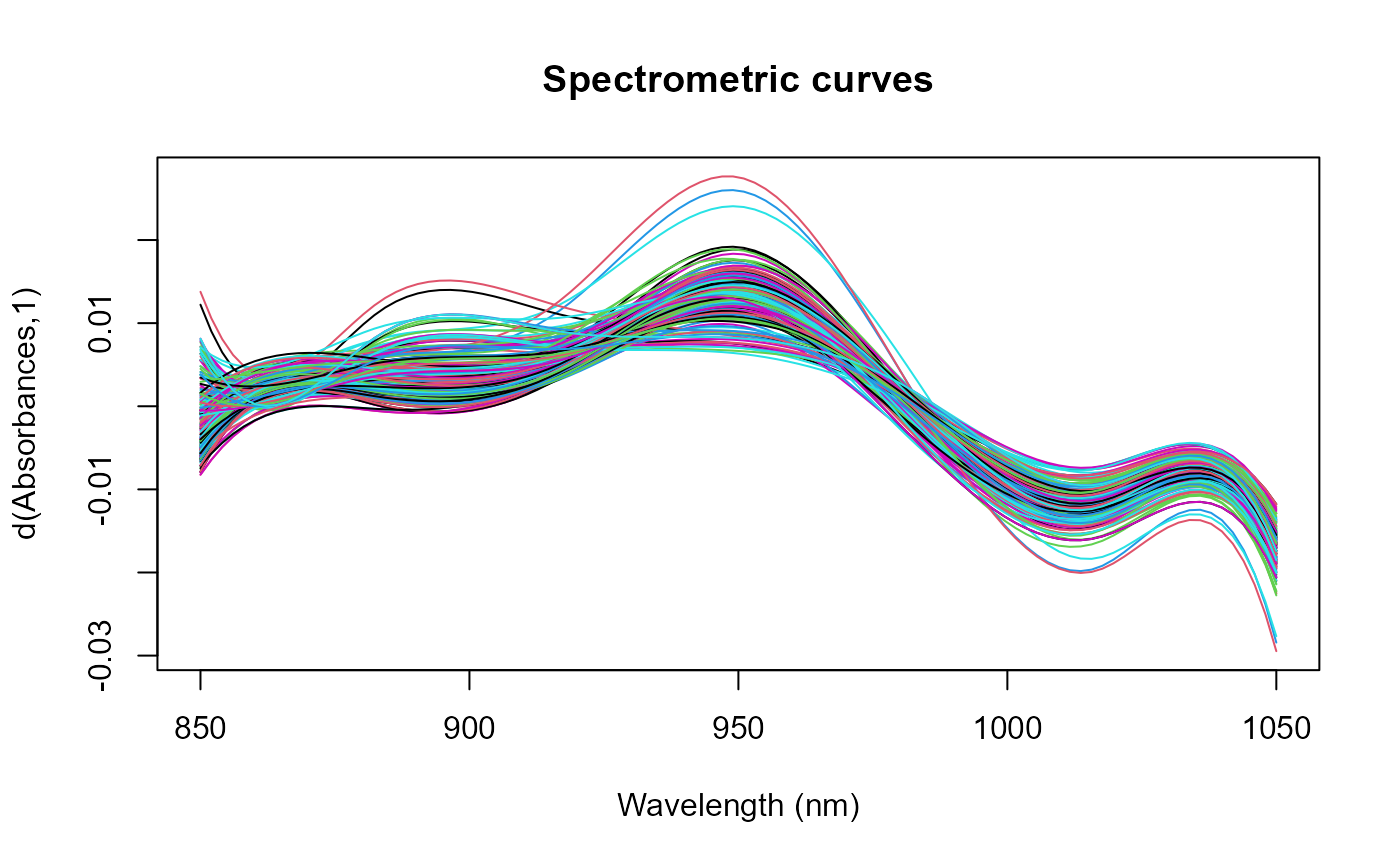Computes the derivative of functional data.
If method ="bspline", "exponential", "fourier", "monomial" or "polynomial".
fdata.derivfunction creates a basis to represent the functional data. The functional data are converted to classfdusing the Data2fd function and the basis indicated in themethod. Finally, the function calculates the derivative of ordernderivof curves usingderiv.fdfunction.If
method="fmm", "periodic", "natural" or "monoH.FC" is usedsplinefunfunction.If
method="diff", raw derivation is applied. Not recommended to use this method when the values are not equally spaced.
Usage
fdata.deriv(
fdataobj,
nderiv = 1,
method = "bspline",
class.out = "fdata",
nbasis = NULL,
...
)Arguments
- fdataobj
fdataclass object.- nderiv
Order of derivation, by defalult
nderiv=1.- method
Type of derivative method, for more information see details.
- class.out
Class of functional data returned:
fdataorfdclass.- nbasis
Number of Basis for
fdatataobj\$DATA. It is only used if method ="bspline", "exponential", "fourier", "monomial" or "polynomial"- ...
Further arguments passed to or from other methods.
Value
Returns the derivative of functional data of fd class if
class.out="fd" or fdata class if class.out="fdata".
Examples
data(tecator)
absorp=tecator$absorp.fdata
tecator.fd1=fdata2fd(absorp)
tecator.fd2=fdata2fd(absorp,"fourier",9)
tecator.fd3=fdata2fd(absorp,"fourier",nbasis=9,nderiv=1)
#tecator.fd1;tecator.fd2;tecator.fd3
tecator.fdata1=fdata(tecator.fd1)
tecator.fdata2=fdata(tecator.fd2)
tecator.fdata3=fdata(tecator.fd3)
tecator.fdata4=fdata.deriv(absorp,nderiv=1,method="bspline",
class.out='fdata',nbasis=9)
tecator.fd4=fdata.deriv(tecator.fd3,nderiv=0,class.out='fd',nbasis=9)
plot(tecator.fdata4)
 plot(fdata.deriv(absorp,nderiv=1,method="bspline",class.out='fd',nbasis=11))
plot(fdata.deriv(absorp,nderiv=1,method="bspline",class.out='fd',nbasis=11))
 #> [1] "done"
#> [1] "done"